Tom House: Michael Reynolds explores Tom of Finland's living museum
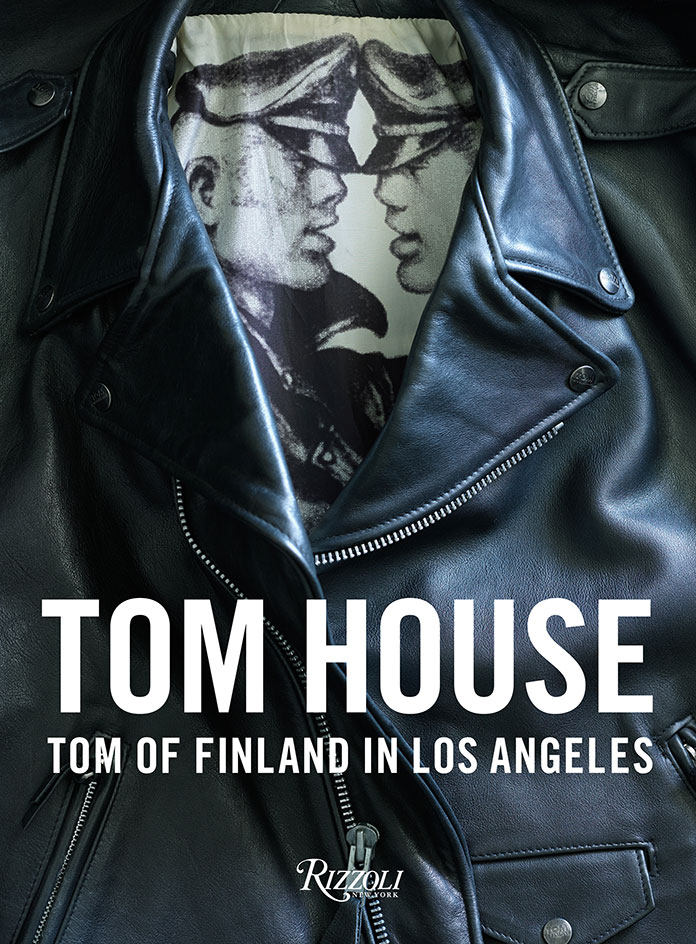
At first glance, the four-floor Craftsman-style house at 1421 Laveta Terrace looks like the kind of perfect fixer-upper that would be snapped up by the kinds of cashed-up creative types flocking to Los Angeles’ Echo Park neighbourhood. But this wholesome looking 106-year-old house, situated behind a manicured evergreen hedge, is a shrine to desire of a distinctly non-real estate kind.
Tom House, as its become known, was the erstwhile home and workplace of renegade Finnish artist Touko Laaksonen, perhaps the most influential homoerotic artist of the 20th century (as featured in W*188). Now home to the Tom of Finland Foundation and the team who faithfully administer it, the property has been immortalised for the first time in Tom House, a deluxe new volume from Rizzoli, published 8 March.
Tom died in his native Finland in 1991, but his work and legacy have continued to flourish due to the indefatigable efforts of the foundation and its founder Durk Dehner, an Auntie Mame in leather who owns and oversees this sprawling paean to the libidinal. (With more than 3,500 artworks and 100,000 documents, images and items of memorabilia, it’s the world’s largest repository of erotic art). Dehner first encountered Tom’s drawings in the late 1970s, a moment which changed the course of his life and led to the establishment of the home and foundation. 'The mission of the foundation is really to carry on Tom’s legacy, which is all about having a healthier, more natural way of looking at sexuality. We think sexuality doesn’t stop when you leave the bedroom,' says Dehner.
The book itself – the vision of creative director and Wallpaper* US editor Michael Reynolds – reflects the property’s idiosyncratic, wildly collaborative spirit. 'The moment I discovered the house some 20 years ago, I was entranced,' says Reynolds. 'I have always been captivated by provocation and things that lurk in the shadows of mainstream culture. Tom House is like a living, breathing commune – the very opposite of a dead artist’s museum. It was just a matter of waiting for the zeitgeist to be ready for this project.'
Lavish interior photographs by Martyn Thompson provide an intimate glimpse into the rambling 17-room house and its surrounds. There’s the crepuscular dungeon, with its myriad leather toys; Tom’s Room, an attic eyrie where the artist would sequester himself, chain-smoking cigarettes whilst working on collaged reference pages, sketches and preparatory drawings (many of which appear in print for the first time in Tom House); and the terraced, cheekily named Pleasure Park, which promises house guests the opportunity for alfresco assignations.
Rounding out Reynolds’ creative dream team is journalist and critic Mayer Rus, who contributed the book’s fascinating foreword. Rus places Tom of Finland and its home within a wider fine art context and captures the property’s sui generis nature. 'Tom House has always been a welcoming gathering place; it’s a safeplace, a sensibility and an almost spiritual experience given the amount of artwork that is guarded here,' says Dehner. Ultimately, it’s a destination best experienced on the page or in person: part frathouse, part bunker of Bohemia, part noncomformist bulwark. At Tom House, pleasure is always a moral imperative and life itself is a form of activism.
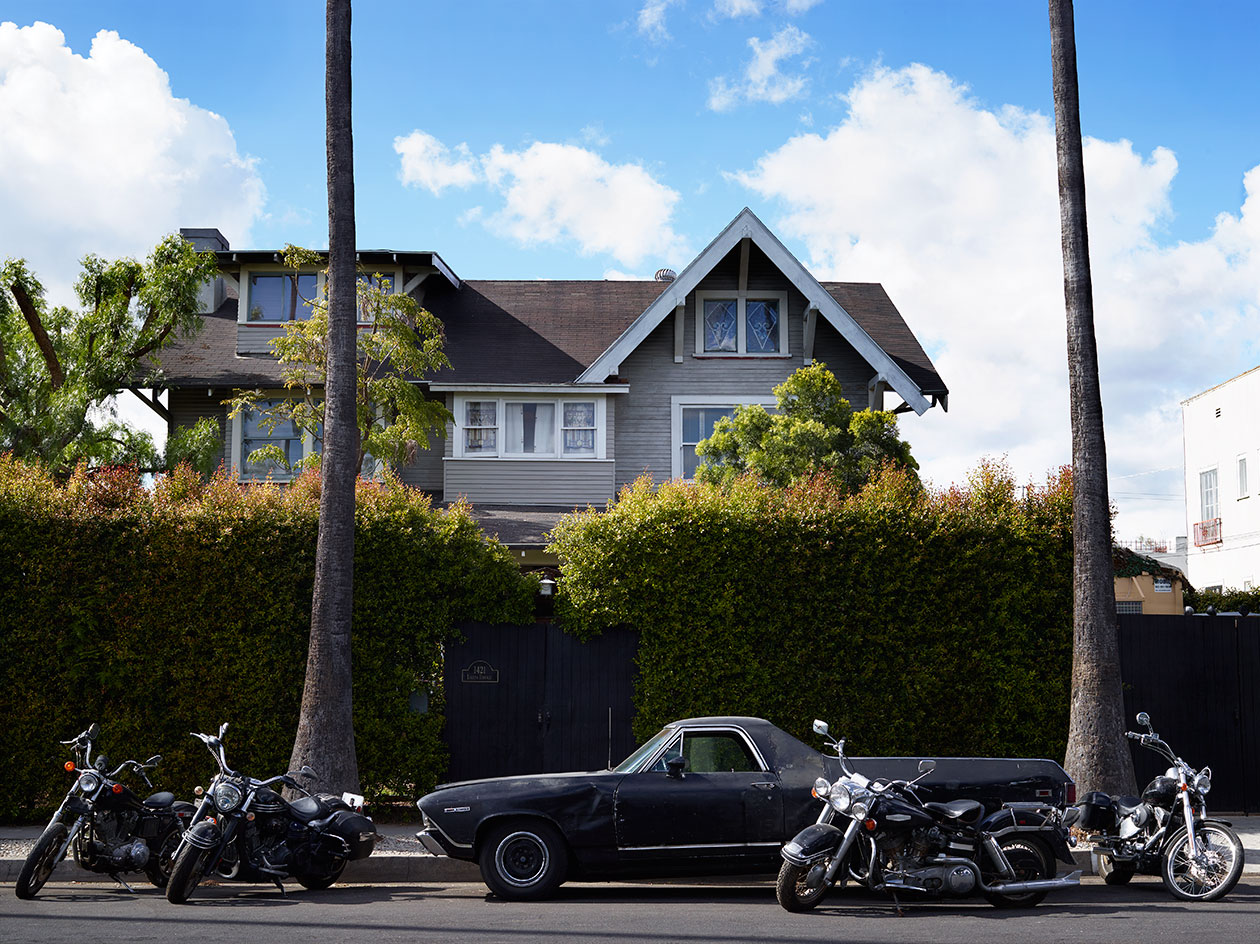
Behind a wholesome looking 106-year old façade, situated behind a manicured evergreen hedge, is a shrine to desire of a distinctly non-real estate kind.
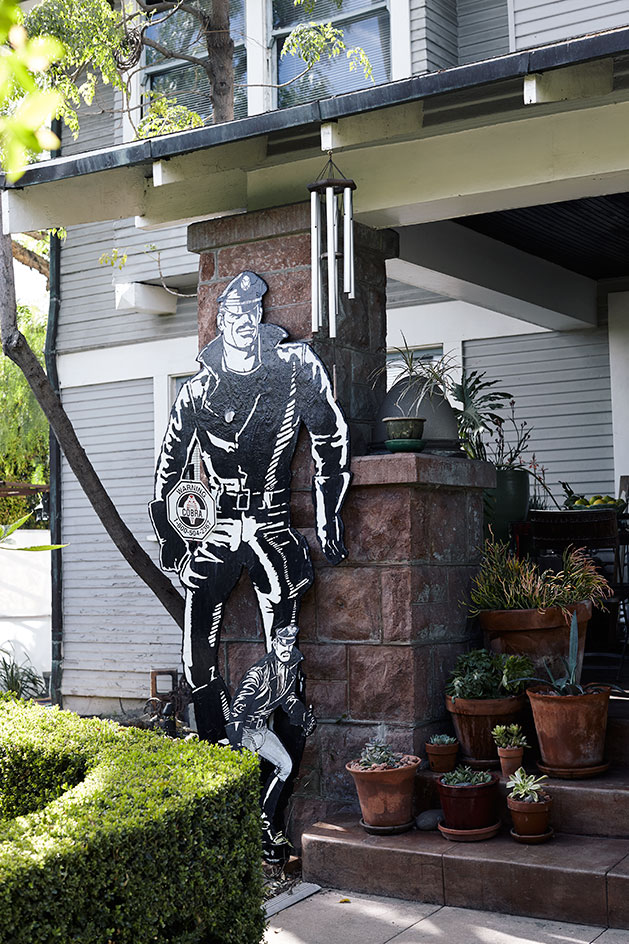
The book itself – the vision of venerated creative director and Wallpaper* US Editor Michael Reynolds – reflects the property’s idiosyncratic, wildly collaborative spirit.
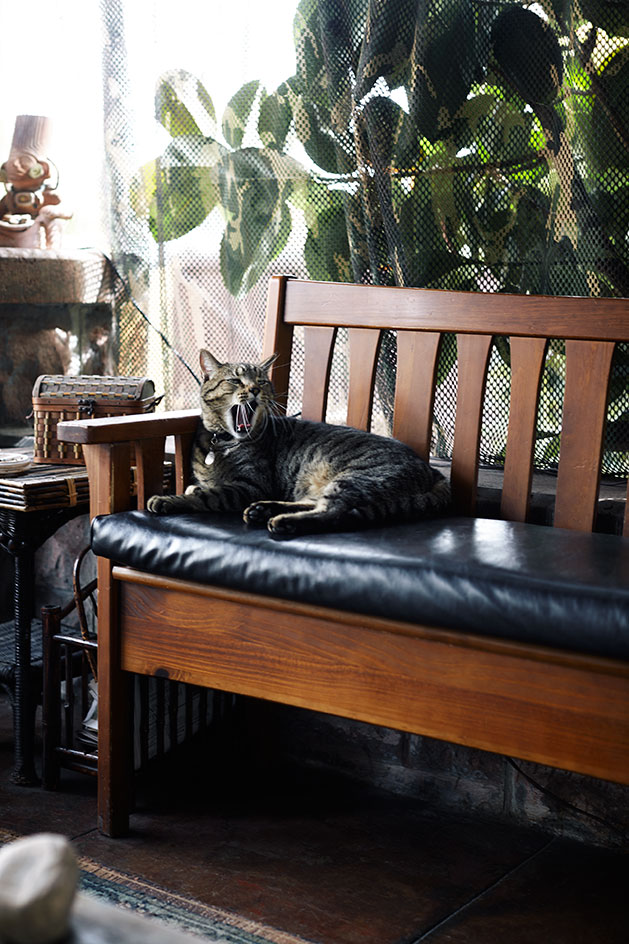
The terrace – cheekily named Pleasure Park – promises house guests the opportunity for alfresco assignations.
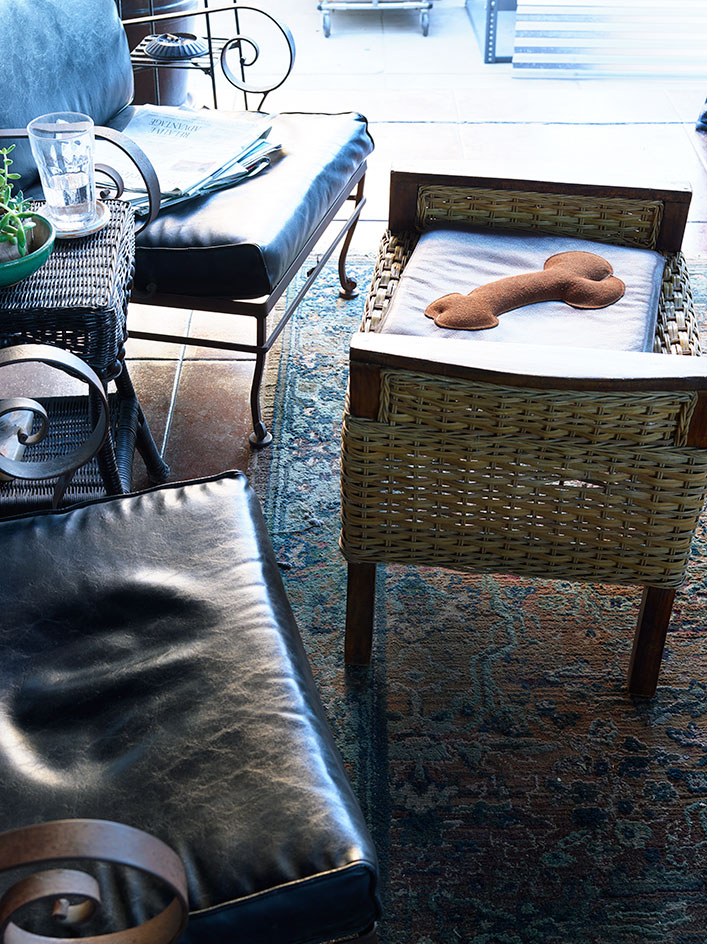
Lavish interior photographs by Martyn Thompson provide an intimate glimpse into the rambling 17-room house and its surrounds.
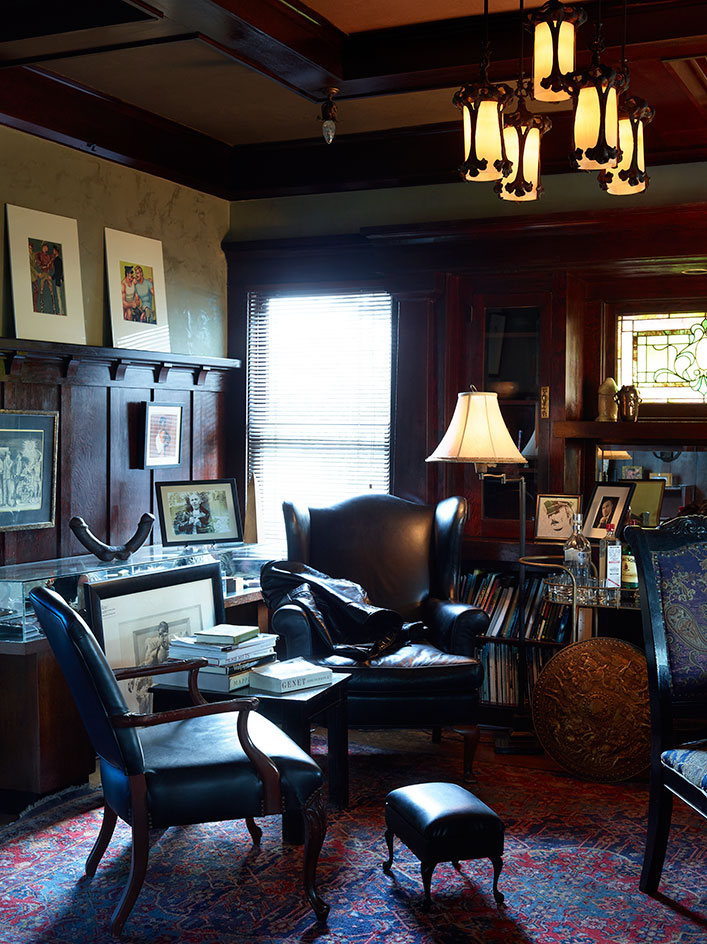
Rounding out Reynolds’ creative dream team is journalist and critic Mayer Rus, who contributed the book’s fascinating foreword.
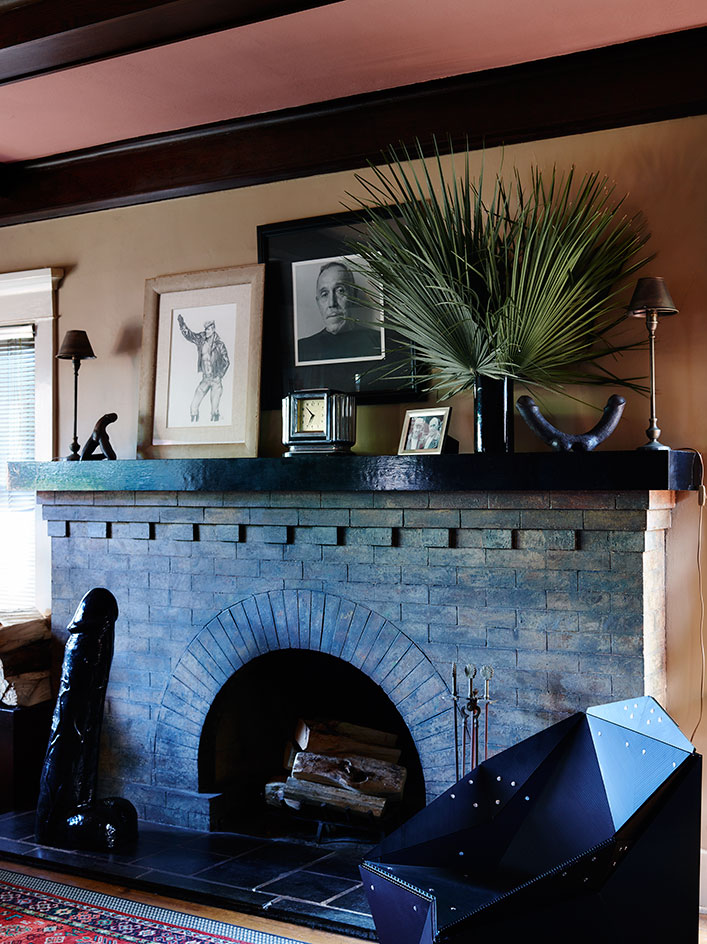
Tom House, as its become known, was the erstwhile home and workplace of renegade Finnish artist Touko Laaksonen, perhaps the most influential homoerotic artist of the 20th century.
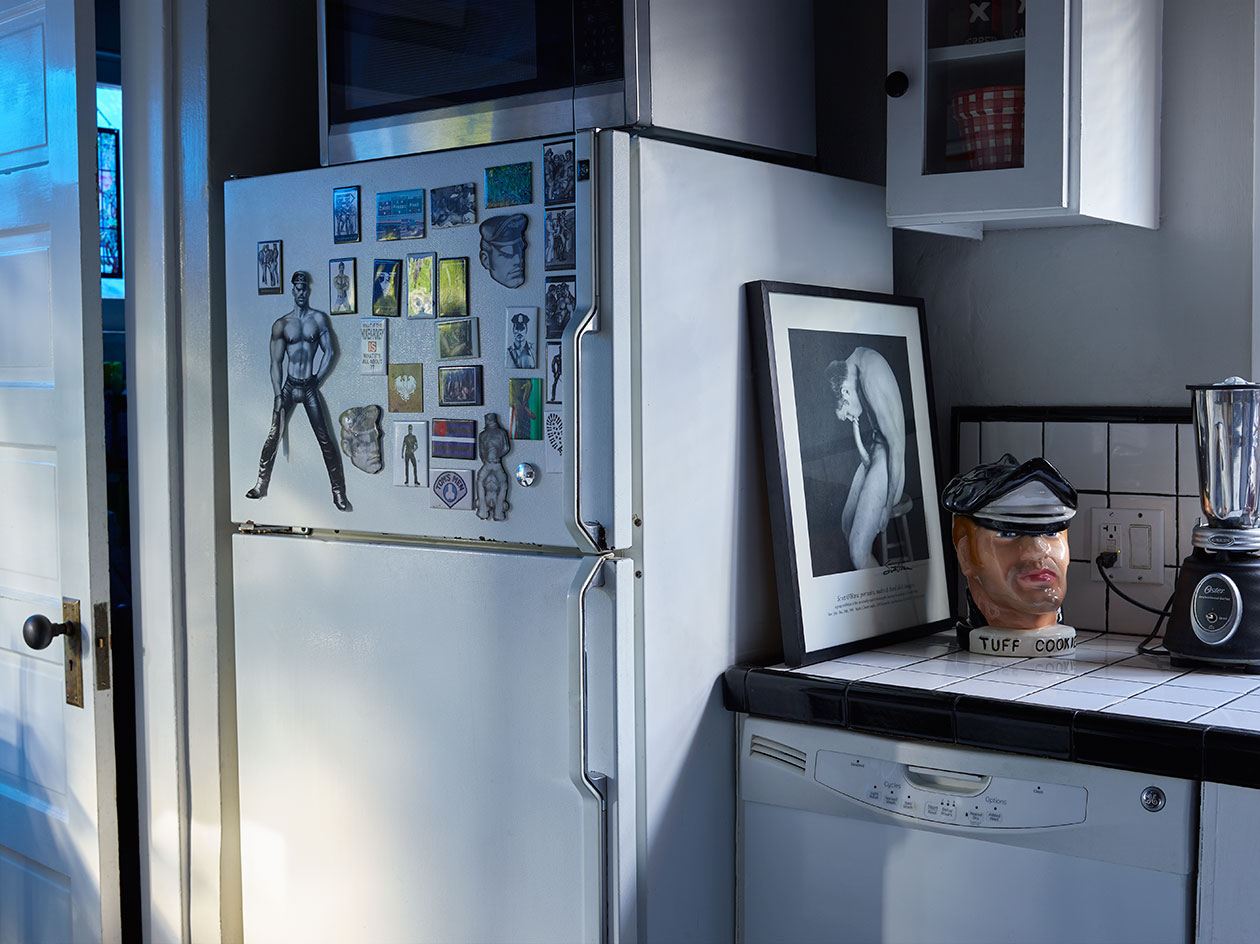
Tom died in his native Finland in 1991, but his work and legacy have continued to flourish due to the foundation and its the work of its founder Durk Dehner.
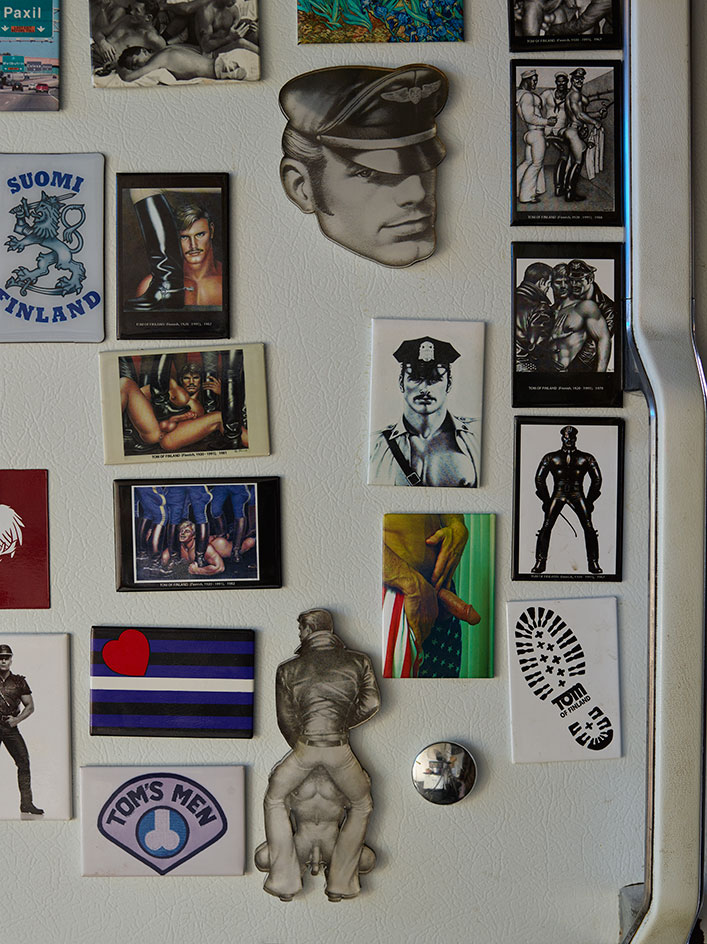
Now, it's home to the Tom of Finland Foundation and the charming team who faithfully administer it.
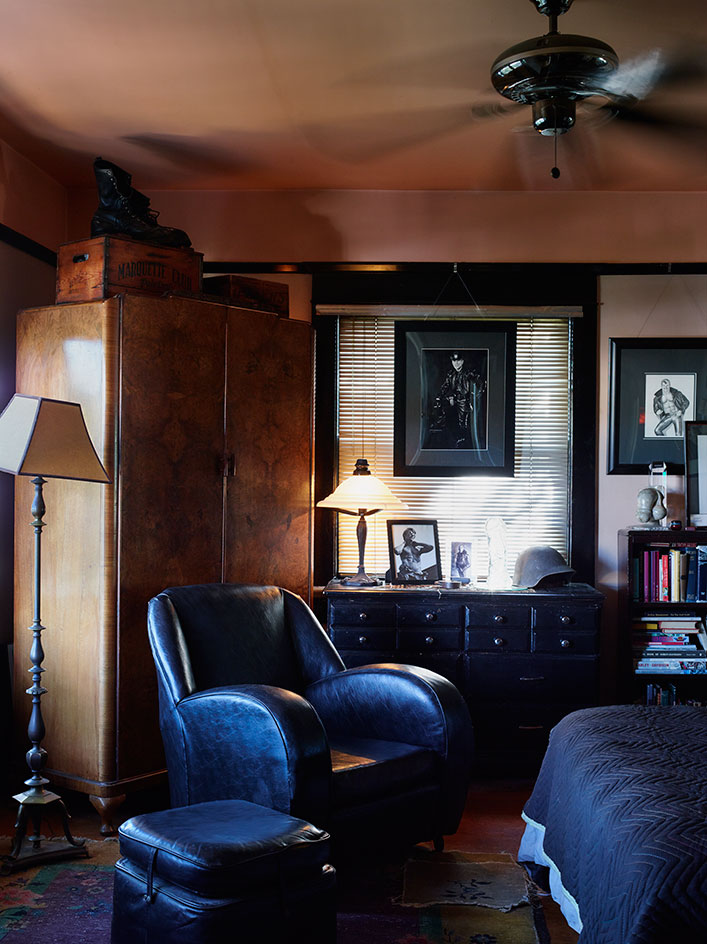
Dehner explains, 'The mission of the foundation is really to carry on Tom’s legacy...'
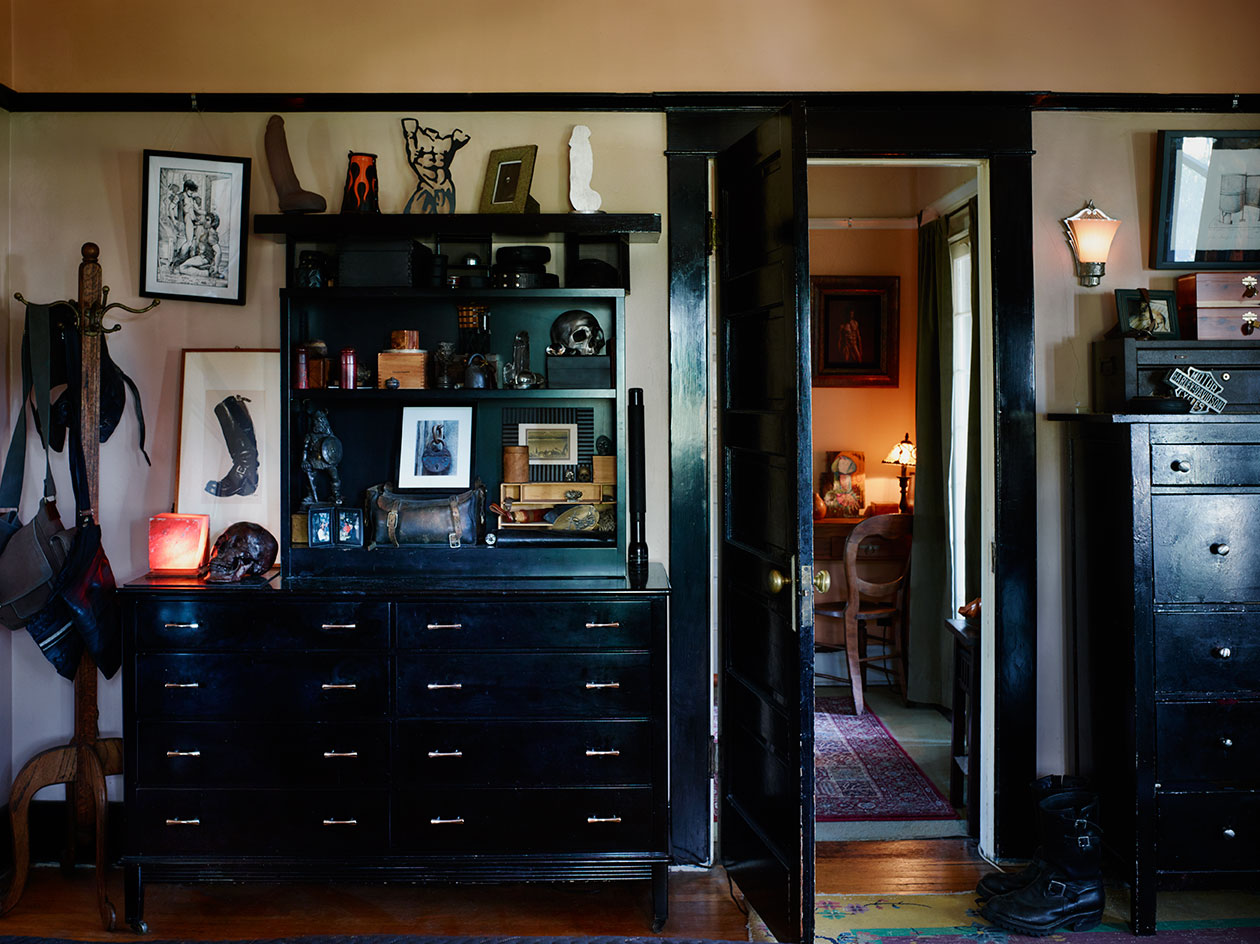
'...which is all about having a healthier, more natural way of looking at sexuality. We think sexuality doesn’t stop when you leave the bedroom'.
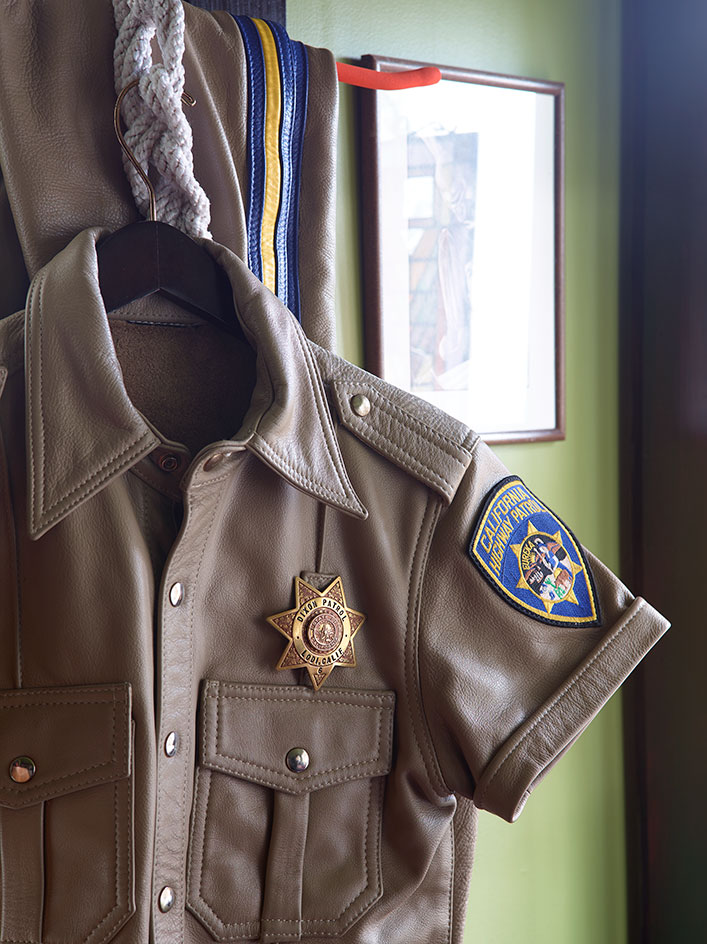
The moment I discovered the house some 20 years ago, I was entranced,' says Reynolds.
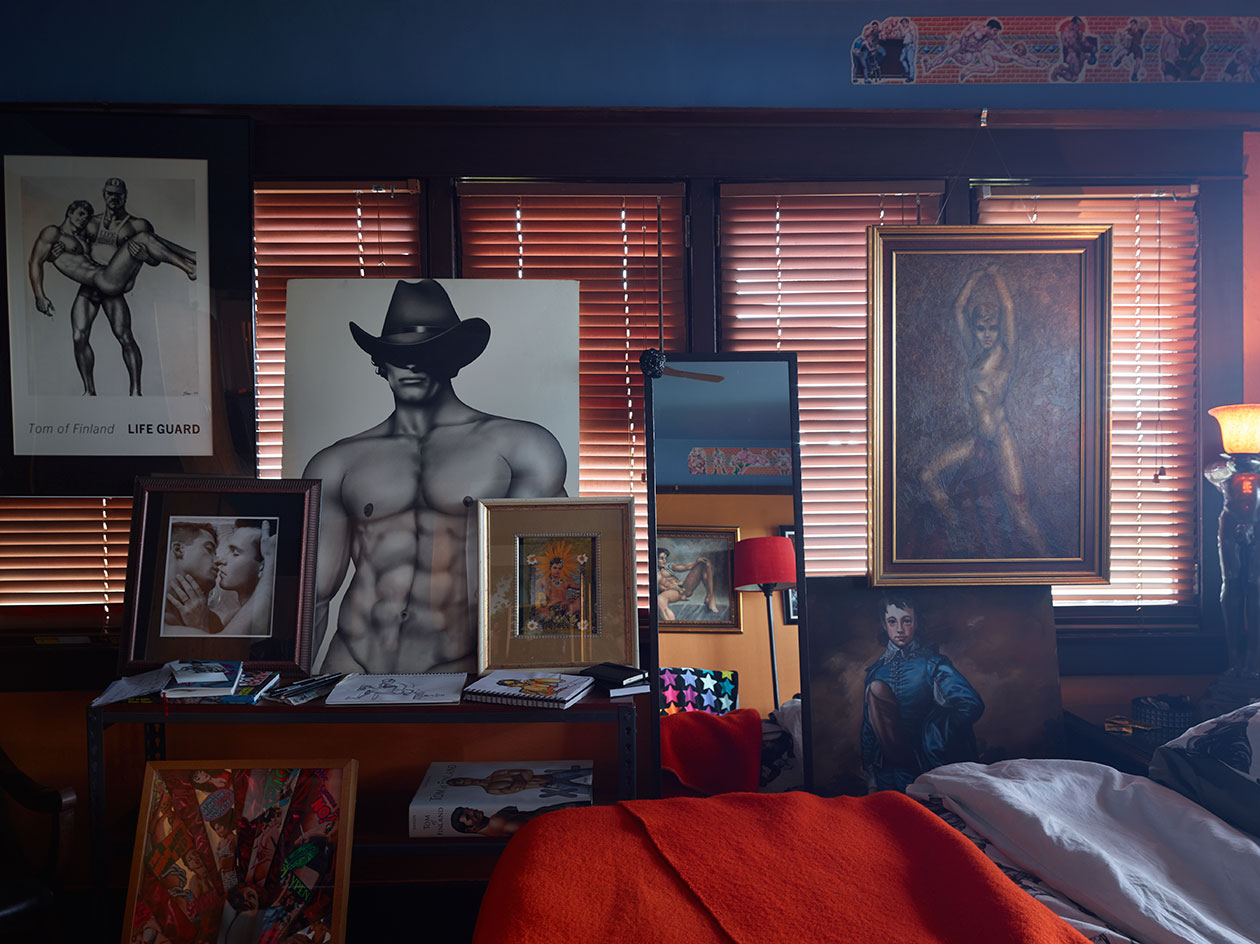
Tom House is like a living, breathing commune,' says Reynolds, 'the very opposite of a dead artist’s museum. It was just a matter of waiting for the zeitgeist to be ready for this project.'
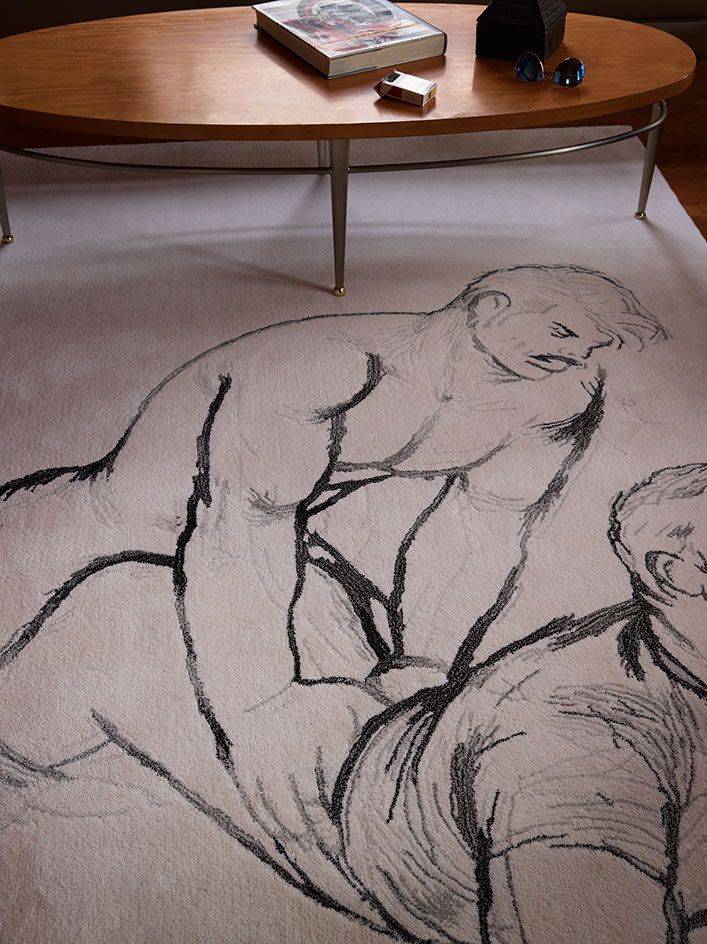
'Tom House has always been a welcoming gathering place; it’s a safeplace, a sensibility and an almost spiritual experience given the amount of artwork that is guarded here,' says Dehner.
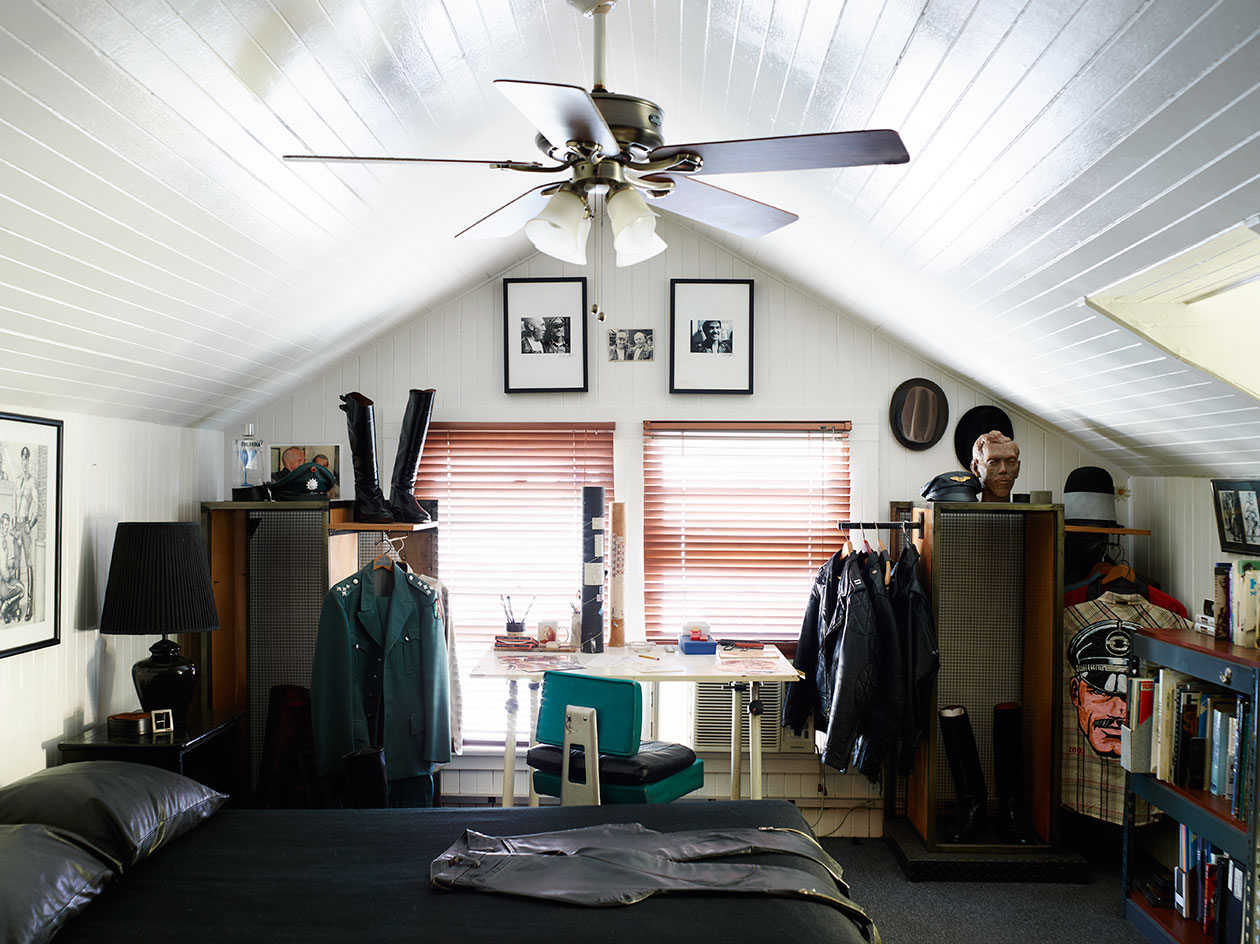
Tom’s Room, an attic eyrie where the artist would sequester himself, chain-smoking cigarettes whilst working on collaged reference pages, sketches and preparatory drawings.
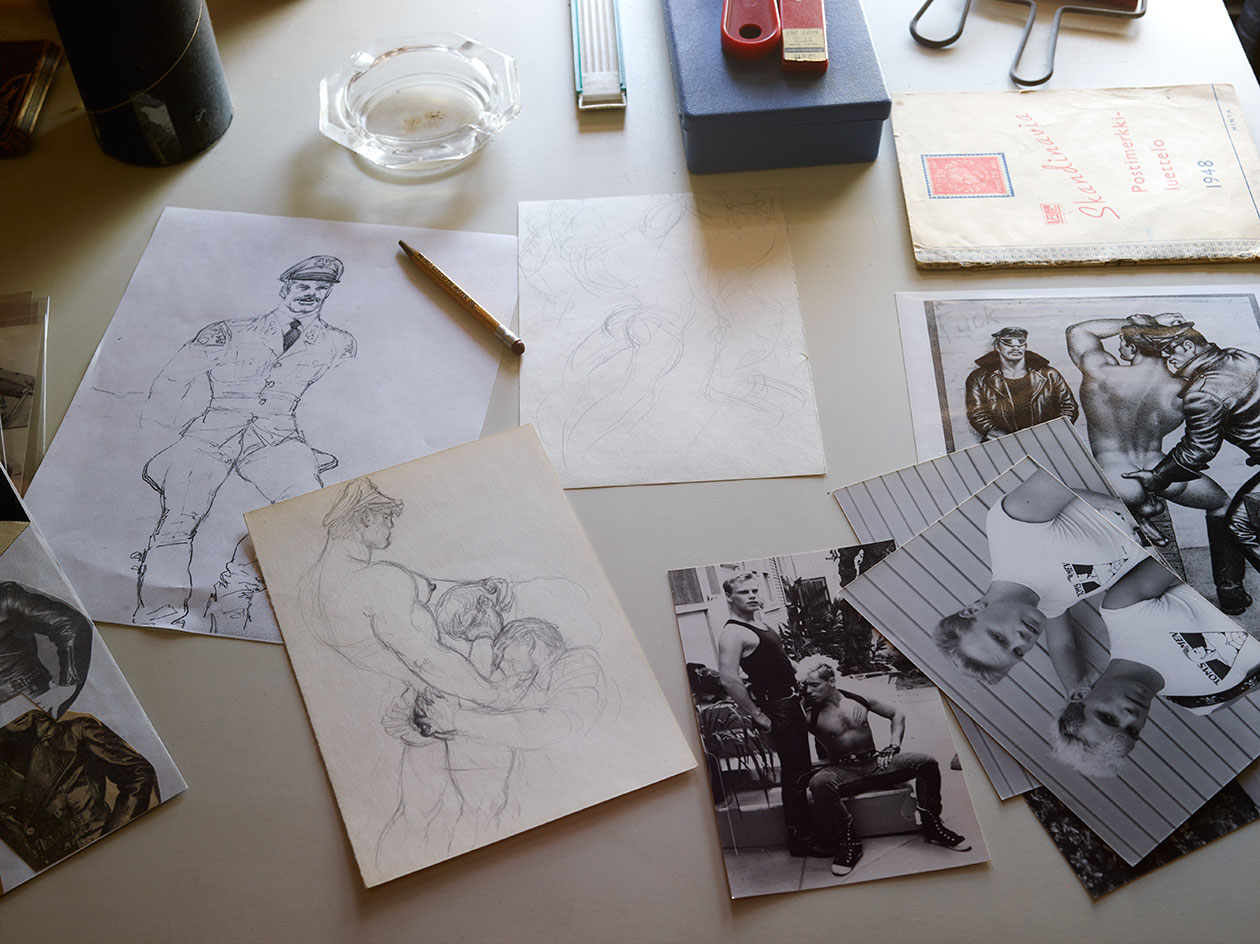
Many of the sketches and drawings appear in print for the first time in Tom House.
INFORMATION
Tom House is published by Rizzoli, $55. For more information, visit the website; Instagram: @tominlosangeles
A book signing for Tom House: Tom of Finland in Los Angeles will take place on 12 March, 4-6pm at David Kordansky Gallery
ADDRESS
David Kordansky Gallery, 5130 W, Edgewood Place, Los Angeles, 90019
Receive our daily digest of inspiration, escapism and design stories from around the world direct to your inbox.
-
 This cult Los Angeles pop-up restaurant now has a permanent address
This cult Los Angeles pop-up restaurant now has a permanent addressChef Brian Baik’s Corridor 109 makes its permanent debut in Melrose Hill. No surprise, it's now one of the hardest tables in town to book
-
 French bistro restaurant Maset channels the ease of the Mediterranean in London
French bistro restaurant Maset channels the ease of the Mediterranean in LondonThis Marylebone restaurant is shaped by the coastal flavours, materials and rhythms of southern France
-
 How ethical is Google Street View, asks Jon Rafman in Copenhagen
How ethical is Google Street View, asks Jon Rafman in CopenhagenIn 'Report a Concern - the Nine Eyes Archives' at Louisiana Museum of Art, Copenhagen, Jon Rafman considers technology's existential implications
-
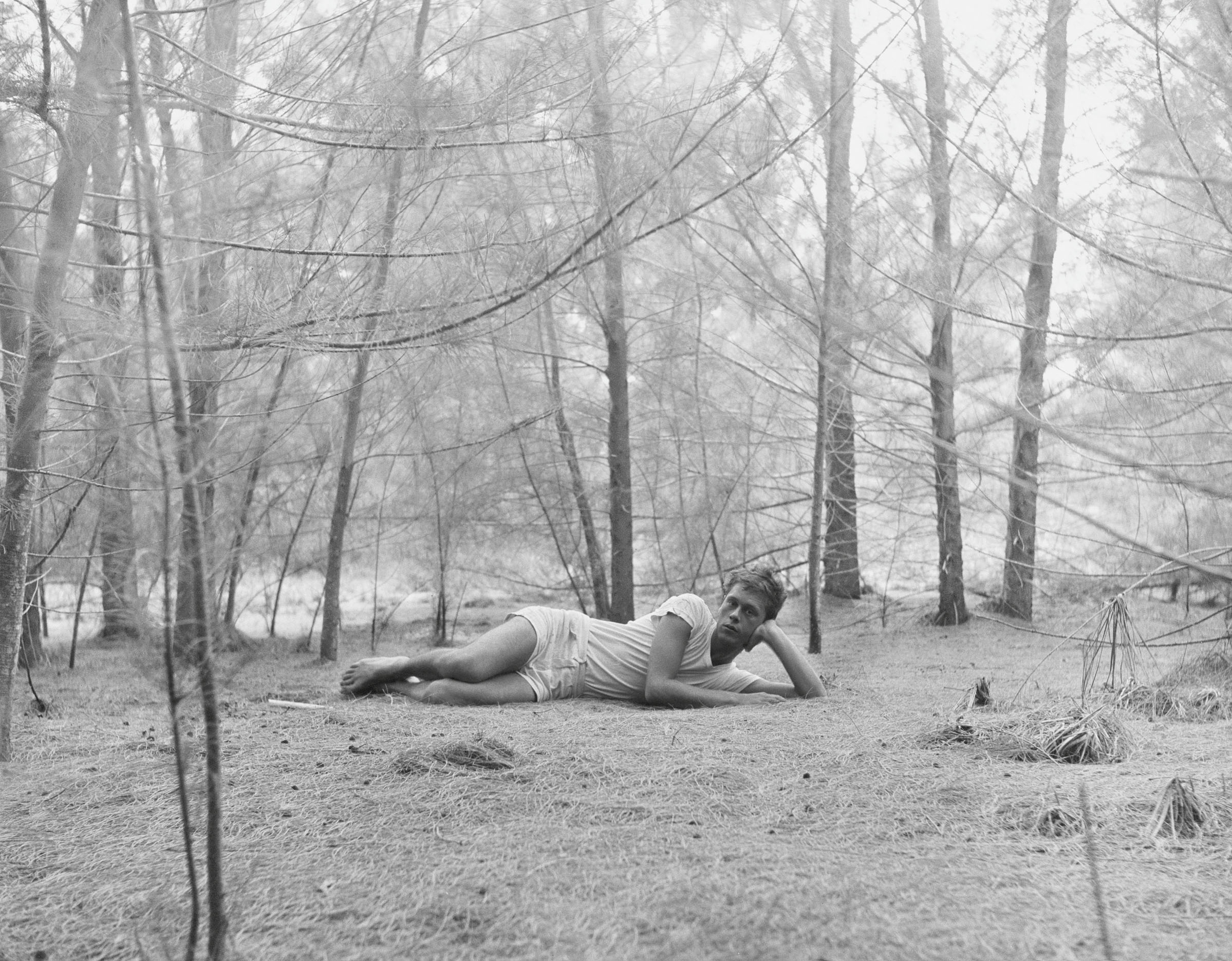 Inside the seductive and mischievous relationship between Paul Thek and Peter Hujar
Inside the seductive and mischievous relationship between Paul Thek and Peter HujarUntil now, little has been known about the deep friendship between artist Thek and photographer Hujar, something set to change with the release of their previously unpublished letters and photographs
-
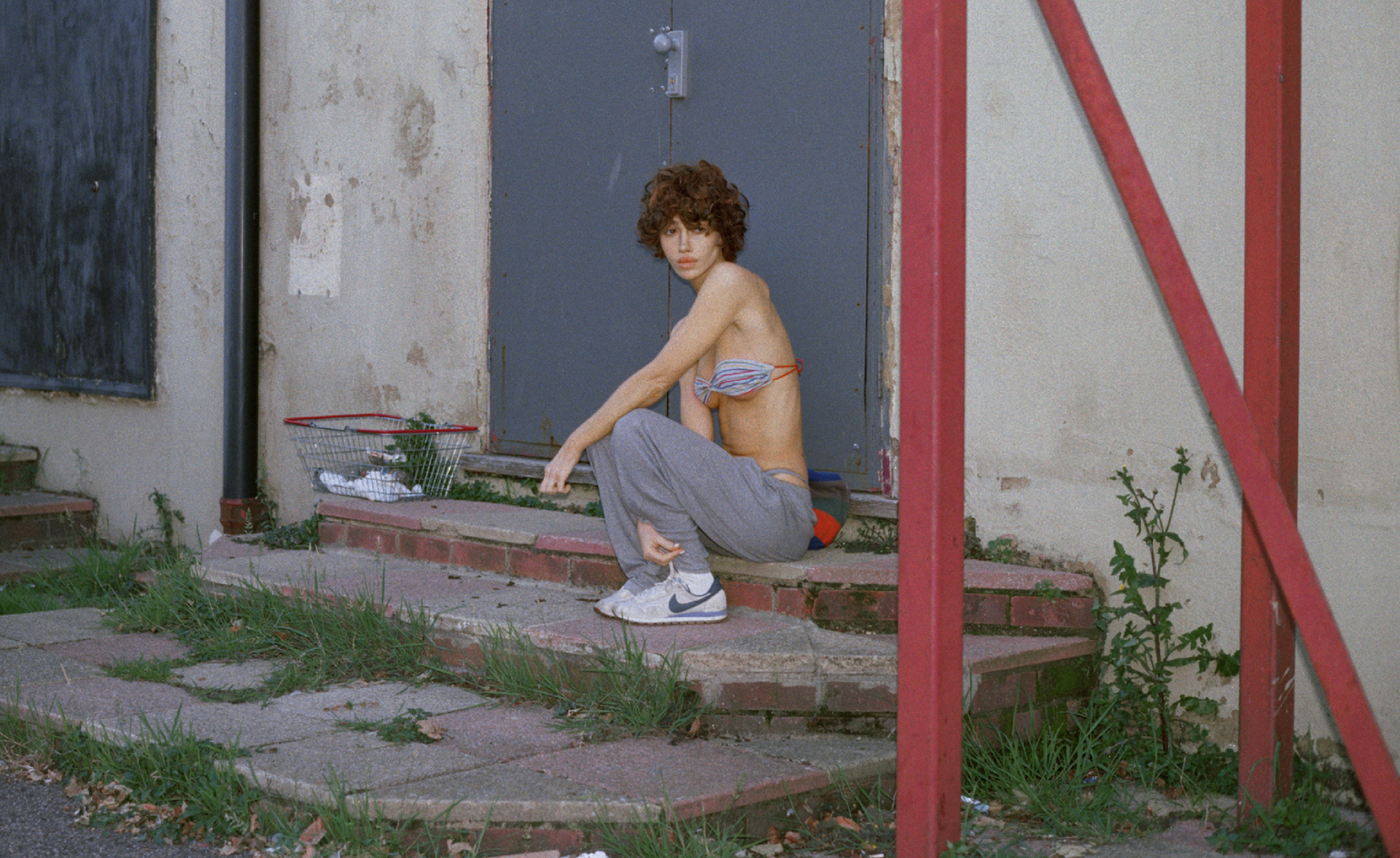 Nadia Lee Cohen distils a distant American memory into an unflinching new photo book
Nadia Lee Cohen distils a distant American memory into an unflinching new photo book‘Holy Ohio’ documents the British photographer and filmmaker’s personal journey as she reconnects with distant family and her earliest American memories
-
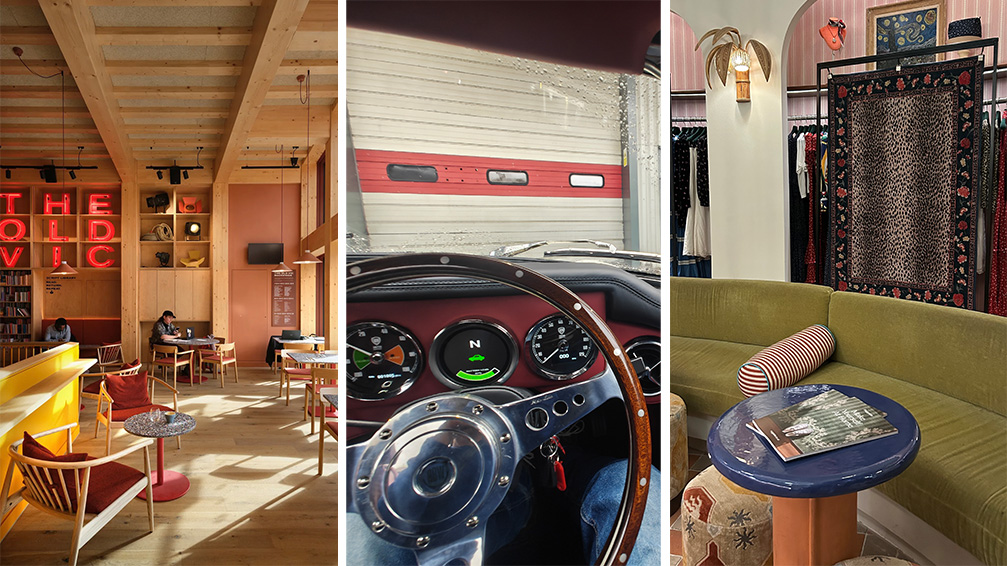 Out of office: The Wallpaper* editors’ picks of the week
Out of office: The Wallpaper* editors’ picks of the weekThe rain is falling, the nights are closing in, and it’s still a bit too early to get excited for Christmas, but this week, the Wallpaper* team brought warmth to the gloom with cosy interiors, good books, and a Hebridean dram
-
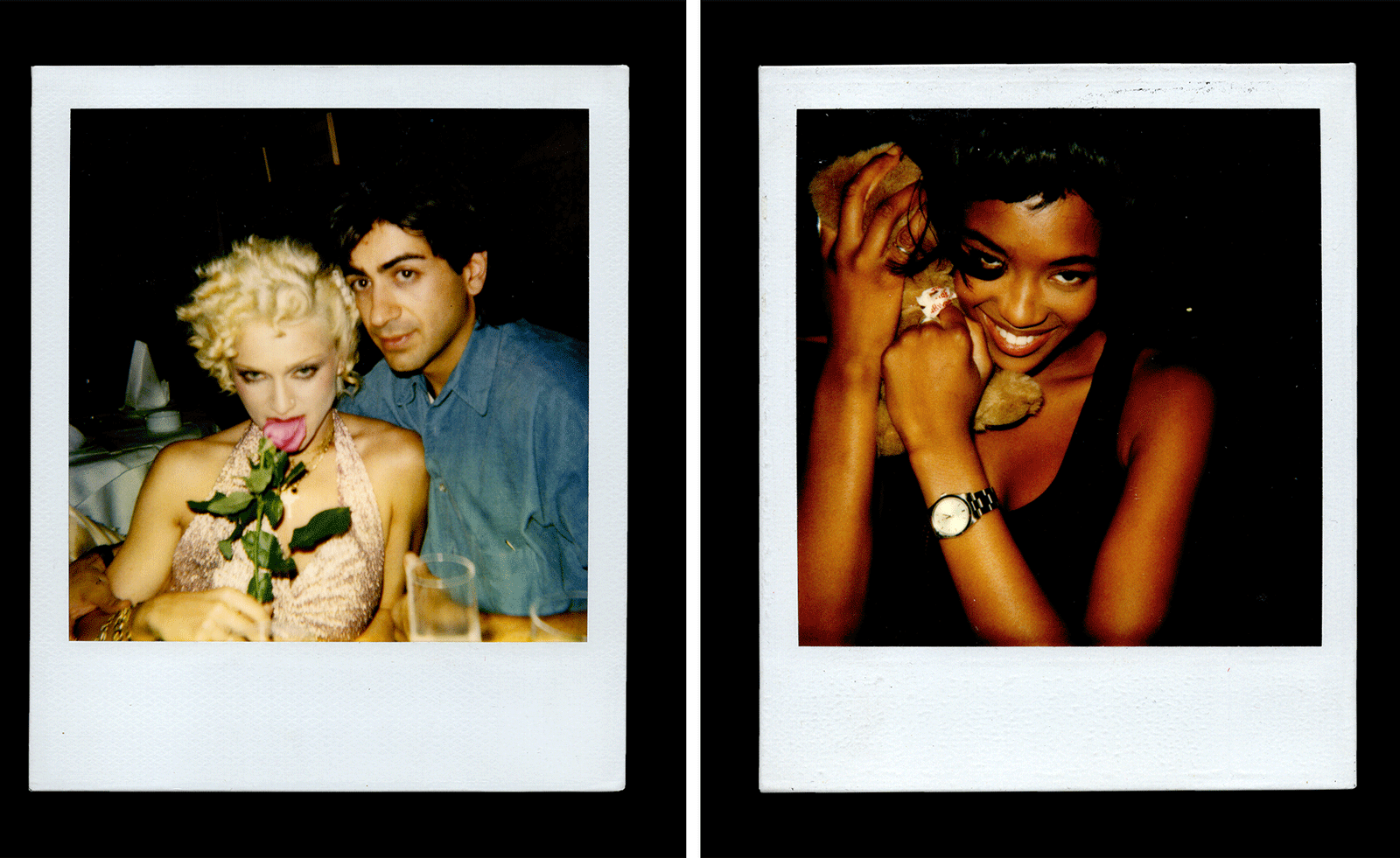 Inside Davé, Polaroids from a little-known Paris hotspot where the A-list played
Inside Davé, Polaroids from a little-known Paris hotspot where the A-list playedChinese restaurant Davé drew in A-list celebrities for three decades. What happened behind closed doors? A new book of Polaroids looks back
-
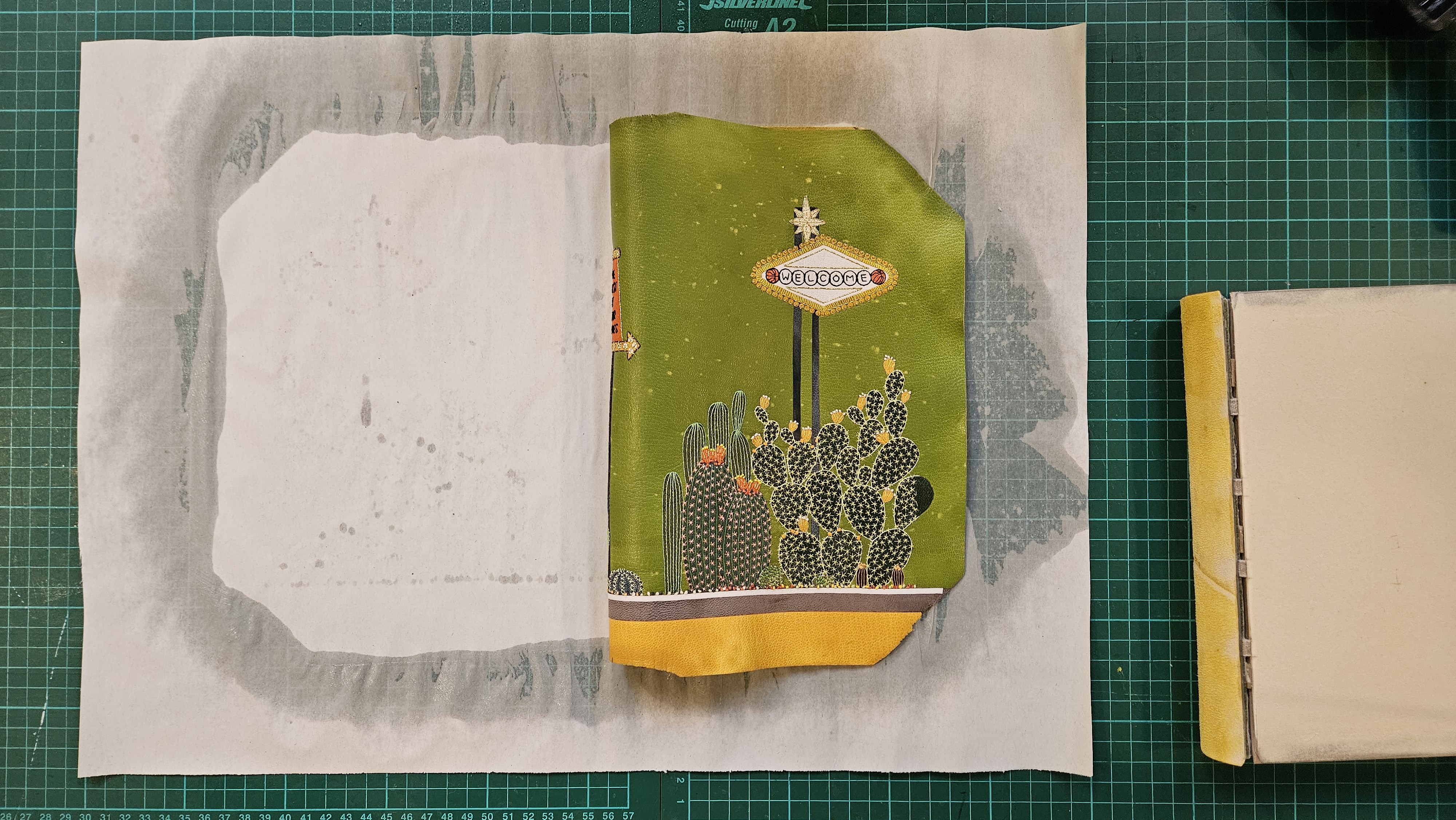 Inside the process of creating the one-of-a-kind book edition gifted to the Booker Prize shortlisted authors
Inside the process of creating the one-of-a-kind book edition gifted to the Booker Prize shortlisted authorsFor over 30 years each work on the Booker Prize shortlist are assigned an artisan bookbinder to produce a one-off edition for the author. We meet one of the artists behind this year’s creations
-
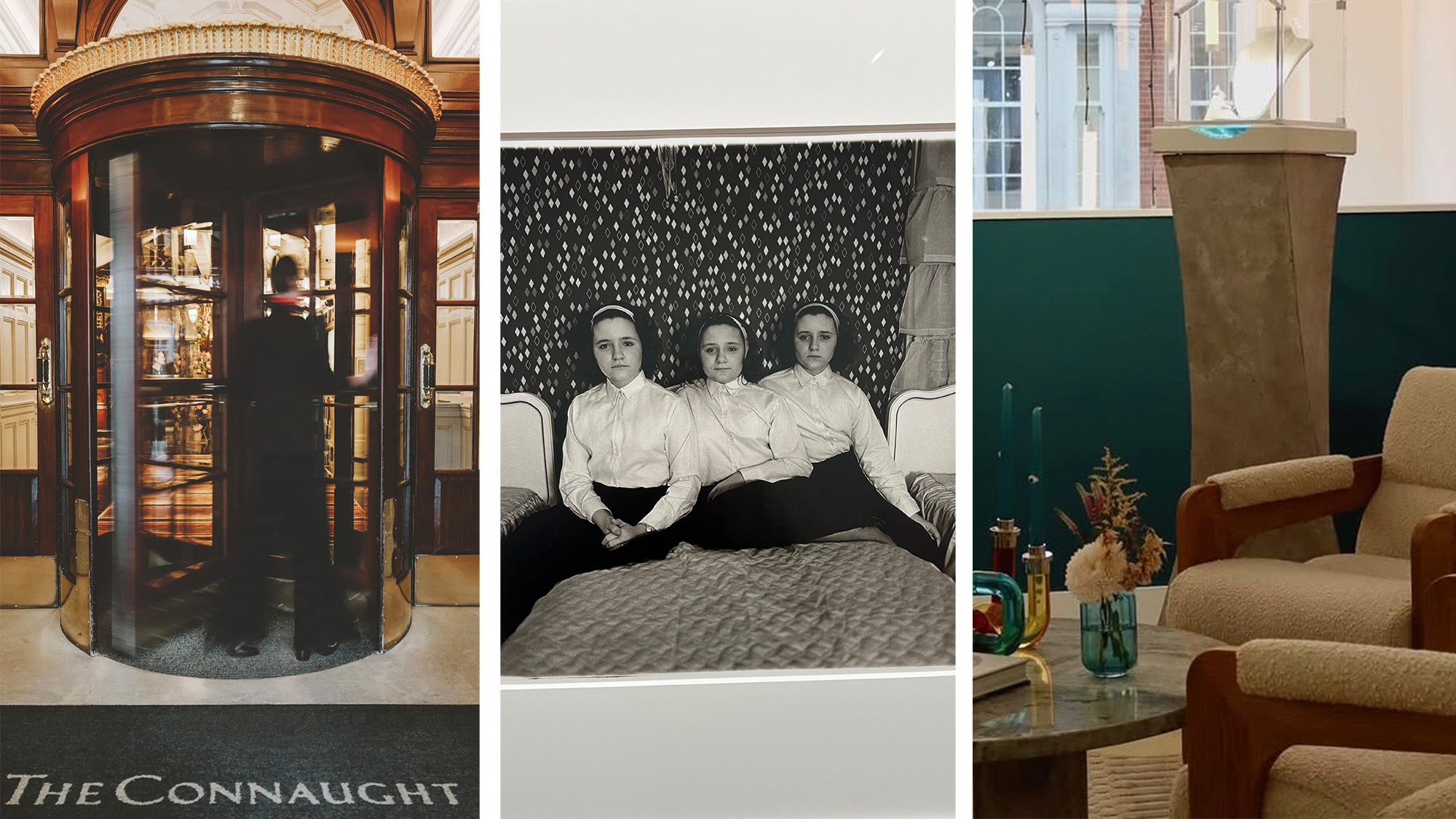 Out of office: The Wallpaper* editors’ picks of the week
Out of office: The Wallpaper* editors’ picks of the weekThis week, the Wallpaper* editors curated a diverse mix of experiences, from meeting diamond entrepreneurs and exploring perfume exhibitions to indulging in the the spectacle of a Middle Eastern Christmas
-
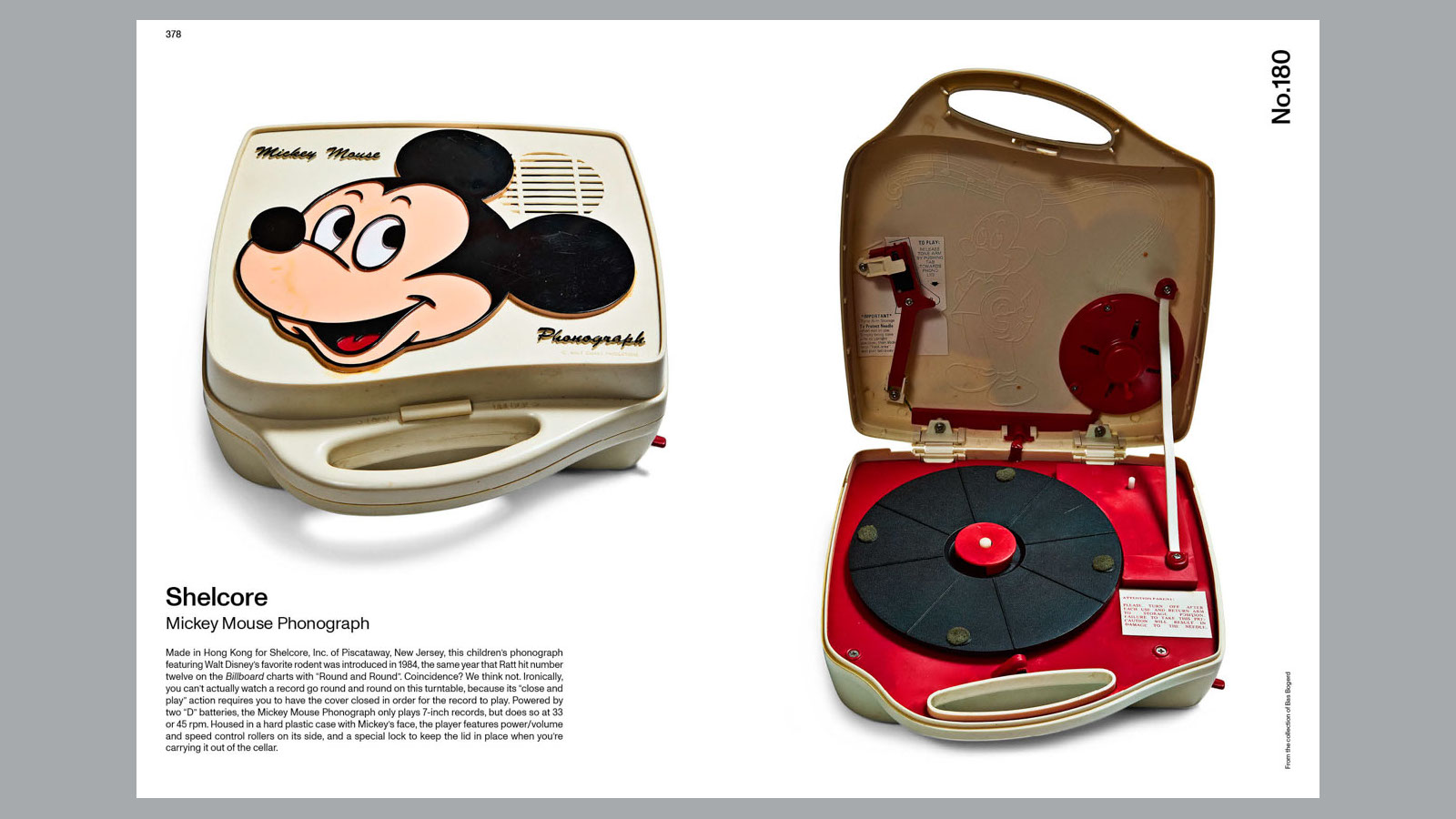 14 of the best new books for music buffs
14 of the best new books for music buffsFrom music-making tech to NME cover stars, portable turntables and the story behind industry legends – new books about the culture and craft of recorded sound
-
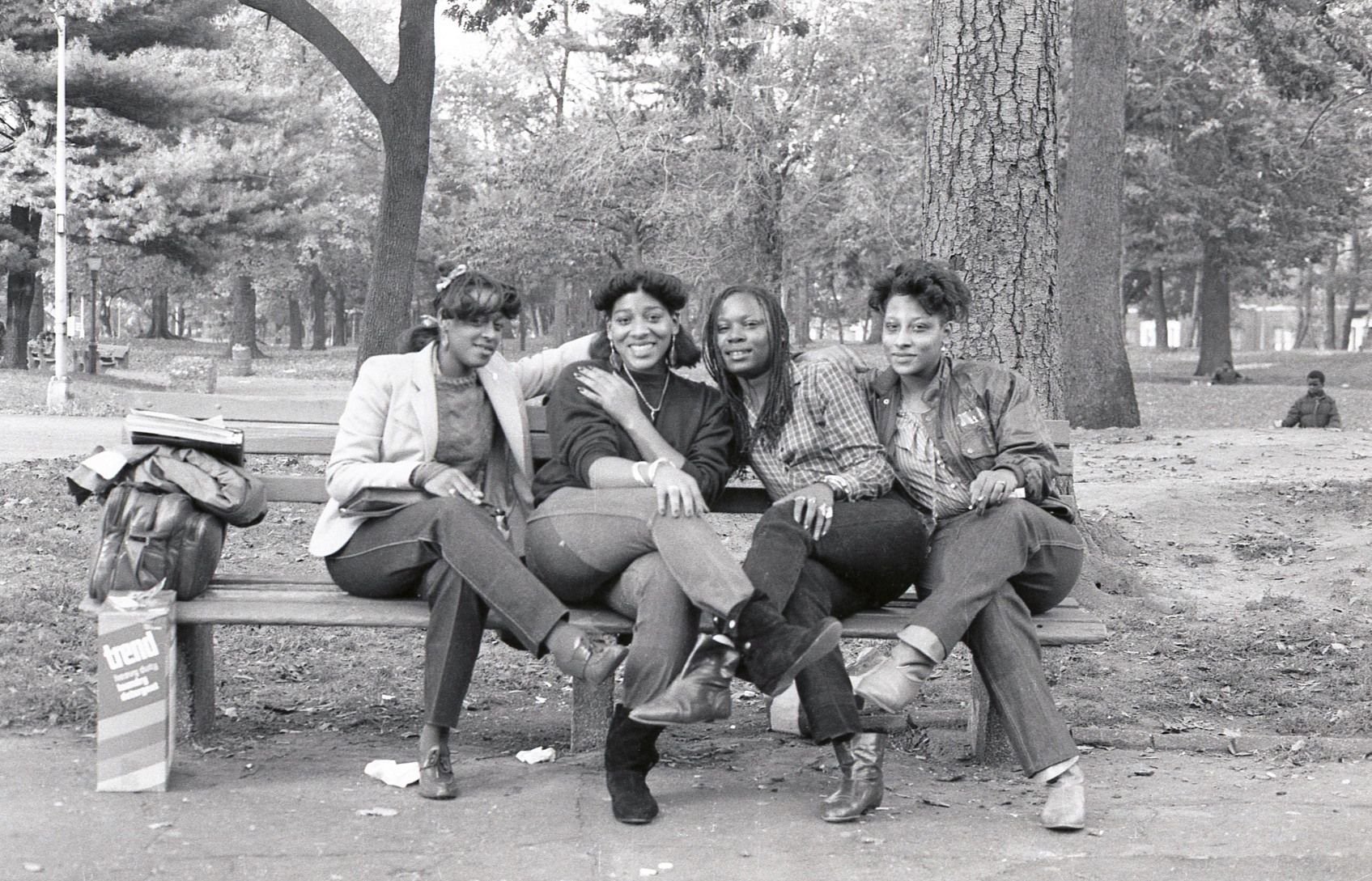 Jamel Shabazz’s photographs are a love letter to Prospect Park
Jamel Shabazz’s photographs are a love letter to Prospect ParkIn a new book, ‘Prospect Park: Photographs of a Brooklyn Oasis, 1980 to 2025’, Jamel Shabazz discovers a warmer side of human nature